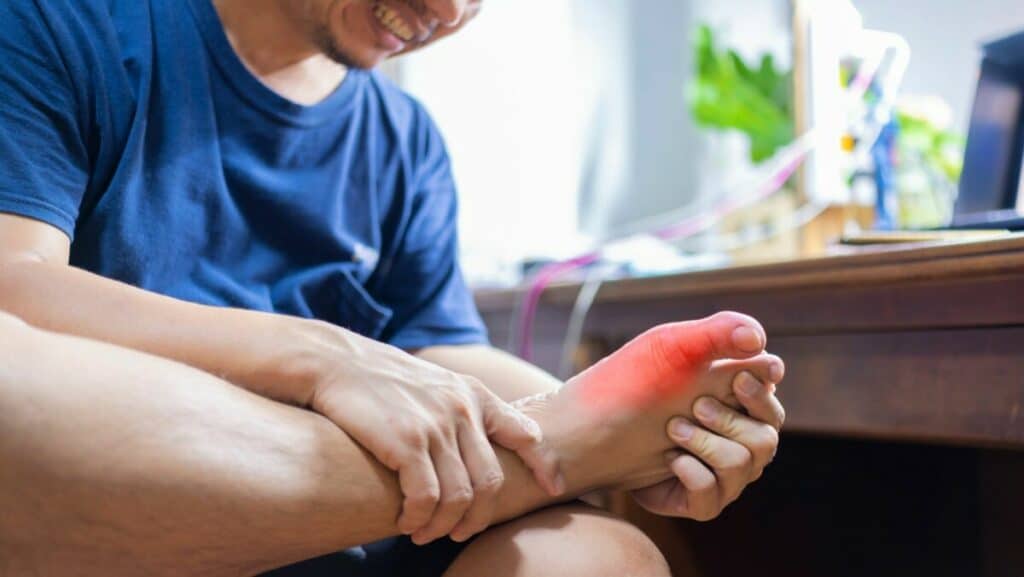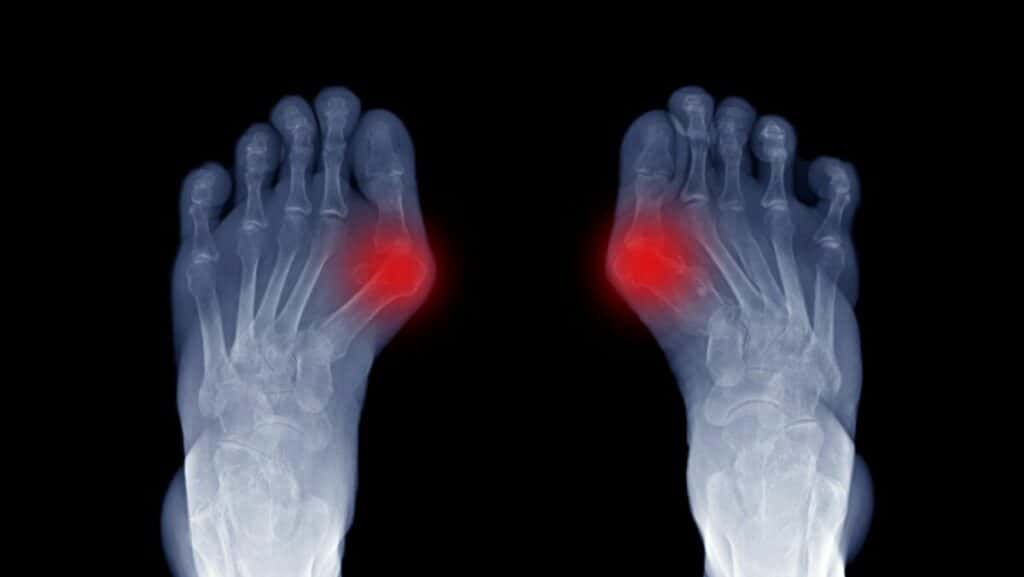Arthritis in Big Toe
- Best Asics Shoes for Flat Feet - October 25, 2024
- Best Running Shoes for Flat Feet - October 22, 2024
- Posterior Tibial Tendonitis - October 21, 2024
Arthritis in the big toe joint is also known as Hallux Rigidus, which reduces the range of movement of the big toe, especially into extension and pain when walking and running. Big toe arthritis can be the result of trauma or develop slowly over time, and in this article, we will explain the typical signs of big toe arthritis, how to diagnose it and the best exercises that you can do for pain relief.
Symptoms of Big Toe Arthritis
Pain and swelling around the metatarsophalangeal (MTP) joint after physical activity, such as walking or running, are common in big toe arthritis, alongside some redness of the joint. There is often stiffness in the big toe joint first thing in the morning, improving as the joint warms up.
It can be painful to extend the big toe joint with movements such as crouching and lunging causing particular discomfort. Non-weight-bearing positions should ease the pain of big toe arthritis and symptoms are often slow and progressive.

Causes of Big Toe Arthritis
Big Toe Arthritis can be caused by previous trauma to the joint, such as a fracture or repetitive trauma from activities such as ballet dancing that leads to osteophyte formation and reduction in joint space of the big toe.
Big Toe arthritis can also be insidious and slow in onset with no particular reason for a reduction in the joint space other than natural changes occurring over time.
Arthritis of the big toe is more common in females, and having a family history can increase your risk of onset.
Big Toe Arthritis Diagnosis
Arthritis of the big toe joint can be identified in a clinical setting by a Physical Therapist or a Podiatrist, as we would expect the condition to follow a typical pattern of symptoms as mentioned earlier in this article. We would expect swelling of the joint with pain on palpation and a reduction in the joint’s range of movement.
If a therapist wanted to assess the changes in the joint space, a simple x-ray could demonstrate this, and there is rarely a need for an MRI.

Big Toe Arthritis Treatment
Home treatment for arthritis of the big toe involves a reduction in activity levels until the pain is manageable. Wear a wide-fitting cushioned trainer to reduce the impact on the toe and stop compression of the toes within the toebox. Ice and anti-inflammatories can reduce pain levels alongside massage, while a splint can assist with short-term pain management.
Physical Therapy should consist of a gait assessment to identify factors causing an overload of the big toe. Custom insoles can be created to reduce the stress on the big toe joint when walking or standing.
Exercises for Arthritis in the Big Toe Joint
Patients often demonstrate a reduction in the push-off phase of the gait cycle, so it is important to maintain flexibility and strength in the calf muscles and flexor hallucis longus muscle. Balance training is important alongside mobility exercises for the big toe.
We have written an article on our recommended exercises for arthritis in the big toe joint. Before beginning these exercises, it is important to have the correct diagnosis.
__________________________________
We are specialists in treating foot conditions such as arthritis in the big toe joint and have experts in foot conditions in our clinic in Fulham, South West London. We also run a specialist Biomechanics and Custom Orthotics Service.
Related Articles:
Best Shoes for Bunions – Best Shoes for Big Toe Arthritis – Insoles for Capsulitis – Best Insoles for Flat Feet
